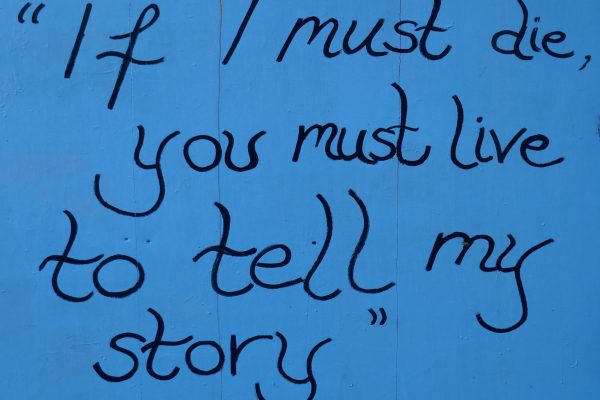There is a Mexican proverb to the effect that if you want to be happy, never leave your native land. That sentiment emerges in many societies, reflecting the folk wisdom that the intricate and subtle web of place, language, climate, and culture is sundered only at great hazard to the individual. But while we easily recognize the deprivation facing a writer exiled from the “motherland”—denied the “mother tongue”—it seems more difficult to define the equivalent experience for the visual artist. After all, the nineteenth-century romantic painters roamed the globe seeking the spectacular and the exotic: Delacroix delighted in the colorful eroticism of North Africa; Gaugin developed his decorative cloisonné symbolism in peasant Brittany and pagan South Pacific; Turner’s swirling cataclysms stormed at him from the high Alps and the sunsets of Venice. In nineteenth-century photography, we think immediately of Maxime DuCamp recording the majesty of Egypt and Syria, John Thompson sailing off to China, William Bradford working his giant wet plates in the freezing Arctic, and Eadweard Muybridge, far from his native England, in the sublime wilderness of the Yosemite.
Is there nothing, then, that resembles the “mother tongue” for photographers? Does the specific landscape into which one is born make no permanent impact on one’s vision? Can photographers, unlike writers, leave their native land with impunity? Is photography, as was suggested by exhibitions like Steichen’s Family of Man, a universal language, tied to no syntactical conventions of a specific culture, freed from ethnocentric habits of mind, shackled by no visual preconceptions? In the search for subject, for content which offers the artist an objective correlative for a concept, a mood, a deep emotion, what risk does the photographer take in abandoning an authentic relationship between visual phenomena and their symbolic resonances in his or her specific culture?
A recent exhibition at the Creative Photography Laboratory of the Massachusetts Institute of Technology featured images of the Dublin-born Alan MacWeeney and the masterful Mexican photographer, Manuel Alvarez Bravo. Together they offered a fascinating juxtaposition of two strongly identifiable places and two markedly different ethnic types. But Bravo had stayed firmly planted in his native land, while MacWeeney uprooted himself from Dublin for a New York apprenticeship with Richard Avedon when he was barely twenty-one. Now MacWeeney continues to live in New York and revisits his home country as frequently as possible. As he told another interviewer (see Valerie Moolman’s “Alan MacWeeney: An Irish Odyssey,” Aperture,Number Eighty-Two), “I feel an affinity with the Irish…I really love the countryside, and I love the quality of light. And I just know what’s ticking when I see the Irish people —I know what’s going on.” There is more than the lilt of an Irish brogue involved here: obviously, the familiar light, the facial expressions and body language he learned in childhood, and the social-psychological set in which he feels completely at home, all speak to him.
MacWeeney’s Irish Odyssey is a series on the tinkers, a group of itinerants generally regarded as social outcasts. Inspired at first by the poetry of Yeats to seek them out, MacWeeney divulged that he had a documentarian ideal as well: he wanted to record the folkways of the tinkers before they vanish like the smoke of their campfires. This urge to be a recording angel has a long history among phtographers as well as among film-makers like Flaherty and Grierson. In cold print, however, it sounds like the slick, multicolor credo of the National Geographic magazine. Even relatively sophisticated viewers might be fooled by MacWeeney’s slightly exotic subject into thinking he was merely conducting a black-and-white travelogue, with the camera finding nothing but folkways and picturesque scenery. A look at his striking prints of a great white gelding turning its head away, a young girl staring at us through peekaboo cellophane, a boy astride a mottled pony trotting through a debris-strewn meadow, a curly-haired teenager tensely holding her bicycle, the smudged faces of two urchins playing somberly on an abandoned auto, a rainbow reflection unexpectedly curving between a pensive woman and a sorrowful man drinking in a pub, a landscape heavy with mist and dark trees—all these would persuade the viewer that much more is happening than mere surface record.
MacWeeney confesses readily to having been most strongly influenced by another ex-European, Robert Frank, whose cinematic, seemingly spontaneous, pseudo-snapshot technique used in creating his famous and gloomy perspective of America erupts in MacWeeney’s work only in off-center, differentially-focused compositions. Unlike Frank, MacWeeney has no ideological axe to grind. In describing his artistic intentions, MacWeeney used an unusual phrase: he wants his pictures to be “deceptively ordinary.” He would be much happier if he could produce images with his mind rather than with a mechanical contrivance, for what he wants is to “capture what is there.” He agreed, when I asked him, that what he craved was a kind of transparency of effect, as if the camera did not intervene between himself and his subject. Unfortunately, it is a notorious paradox that photography cannot be trusted as a “messenger-boy of reality,” as Walter Benjamin astutely remarked.
Why does MacWeeney need to return to Ireland to find compatible subjects? Why should it be so difficult, as he admits, to find inspiration in hard-edged, tumultuous New York City, when it comes so easily in mist-drenched, smoky Ireland? If, indeed, he seeks transparency, only to “capture what is there,” why does he need the emotional support which being among his countrymen, even of a different social class, offers his art? (In actuality, it took him several months to acclimate to the tinkers’ folkways.) It is not always a matter of what resonates within oneself, of what speaks to the heart and the brain in signals which have the deepest, most intuitive meanings? In Manhattan, apparently, MacWeeney is still searching for the resonating chords to move his poetic soul, a soul obviously imbued with the visual meanings and character of his homeland.
Even if we were able to induce the ineffable transparency of experience wherein the desired image simply implants itself on the desired surface, would we then record a more complete reality? Since the content of any single photograph is related necessarily to what has been left out of the frame, this window effect—much noted by critics of painting—means our vision of a presumed totality is limited. That is why what the photographer selects from that totality is so crucial. Those who regard photography as a communication medium quintessentially suited to the transmission of fact and nothing else fail to understand how implacably tenuous a visual fact can be. A visual fact depends almost entirely on its context, and while a single still photograph may resound with meaning, it can encompass only so much and no more of a given world. Even sequences of photographs are severely limited by their essential characteristics: moment/place in time/space…moment/place…in time/space…ad infinitum. Elusive reality slips by even while the fastest motorized camera speeds in its pursuit.
The miracle is that some photographers manage to capture the significance of these fragmented moments and spaces by an intuitive magic of design and metaphor. In his Landscape Into Art, Sir Kenneth Clark noted that “the less an artifact interests our eye as imitation, the more it must delight our eye as pattern, and an art of symbols always evolves a language of decoration.” From MacWeeney to Alvarez Bravo is a giant step not only from misty moors to dusty mountains but from cinematic spontaneity to a greater formalism occasioned by a vastly different culture and slower camera techniques. At first glance, it is the decorative power of Bravo’s prints which captures the attention with bold design: the girl watching birds against a background of breast-shaped mullions, the window on the agaves as handsome as any Paul Strand, “Mr. Municipal President” condensing the history of revolutionary Mexico into one slightly overwhelmed peasant, laughing mannequins reminiscent of the Paris scenes of Eugene Atget, landscapes of cactus and sown agaves and pine trees rippling out strong chords of rhythmic structure.
Then the eye explores surrealist images: a half-naked girl lying on a broken skylight, a woman standing amidst white sheets hiding her face with black fabric, and one of Bravo’s most enigmatic pictures, La buena fama durmiendo (“Good reputation sleeping”). Near a textured, darkened wall lies a naked young woman on a striped blanket. Around her hips and ankles have been wound broad strips of hospital gauze, although no accident has occurred. Close to her vulnerable flesh lie four spiny cactus pods. She is serene, sunning herself, eyes closed, one leg crossed over the other. The longer one gazes at this odd, self-absorbed scene, the more hypnotized one becomes.
In her recently republished book (M Alvarez Bruno, David R. Godine, Boston), Jane Livingston—Associate Curator of the Corcoran Gallery—comments that Bravo is “entirely unaware of the elusive iconologies of his images.” She notes that “poetic images and concrete symbols in Mexican life, as in its art, seem to lodge in universally familiar syntax. The horse, the dog, the pair of hands at work, drapery on clothes lines, the mask, the skull, the serpent—such objects have mythological significance understood by every Latin American. ” For MacWeeney’s tinkers, the list might include the white horse, swans, cats, caravans, tents, dogs, magic stones, trees, unholy night places, symbols he had to learn but which were closely related to general Irish folklore.
When we think of a photographer’s identification with a place, perhaps we summon up Edward Weston at Point Lobos, Harry Callahan’s Chicago, Andre Kertesz and Washington Square. Obviously, place is not simply landscape, but a configuration of people, a kind of light governed by moisture or dryness, the symbols a particular culture originates as it evolves in a physical setting, and, perhaps, a willingness by the photographer to interact with these factors at least partially on their own terms. I say at least partially because there is never any escaping the idiosyncrasies of personality, no matter how objective the camera pretends to be, or how transparently uninterfering the photographer hopes to be. In Alvarez Bravo’s case, some of his images are veiled, their meanings hidden from us not only by the special languages of his cultural mythos, or by the secretive, proud, even haughtily self-contained Latin personality, but by a unique vision extracting its own meaning from its environment. Of course, he has had plenty of time in which to develop this vision; he is seventy-eight years old and has spent all but one of those years in Mexico. MacWeeney, forty-one, left Ireland in 1961, yet feels compelled to return again and again. We can never know what might have happened if Bravo had been uprooted and MacWeeney had never left home.
When Starr Ockenga, Director of the Creative Photography Laboratory, decided to mount the MacWeeney-Bravo joint exhibition, the publicity releases announced that “this two-person/two-country show will offer a metaphorical representation” of their two distinctly different homelands. Ockenga, herself a talented photographer and Associate Professor in the M.I.T. program for Visual Studies, explained that she had found certain affinities between their subjects and their approaches. What were these affinities? We agreed that both photographers describe relatively homogeneous, non-bourgeois cultures that seem equally foreign to most Americans. More importantly, Ockenga finds that both artists have a passion missing from many contemporary photographers, even through Bravo is somewhat distanced from the viewer and MacWeeney more involved. Neither fears confronting an individual; both find people fascinating, and disdain the current trend toward depersonalization. Or was it also that white horses rear up so conspicuously in each man’s work as symbols of supernatural forces? Alvarez Bruno’s wooden carousel horses are famous for their compressed evocations of horror. Alan MacWeeney’s white steeds are more uncanny: real animals, they nevertheless glow with unearthly radiance.
The difference between them is perhaps in a sense of time: Bravo seems intent on carving his people out of eternity; MacWeeney’s tinkers are already on their way to the next place, whistling down the wind.






